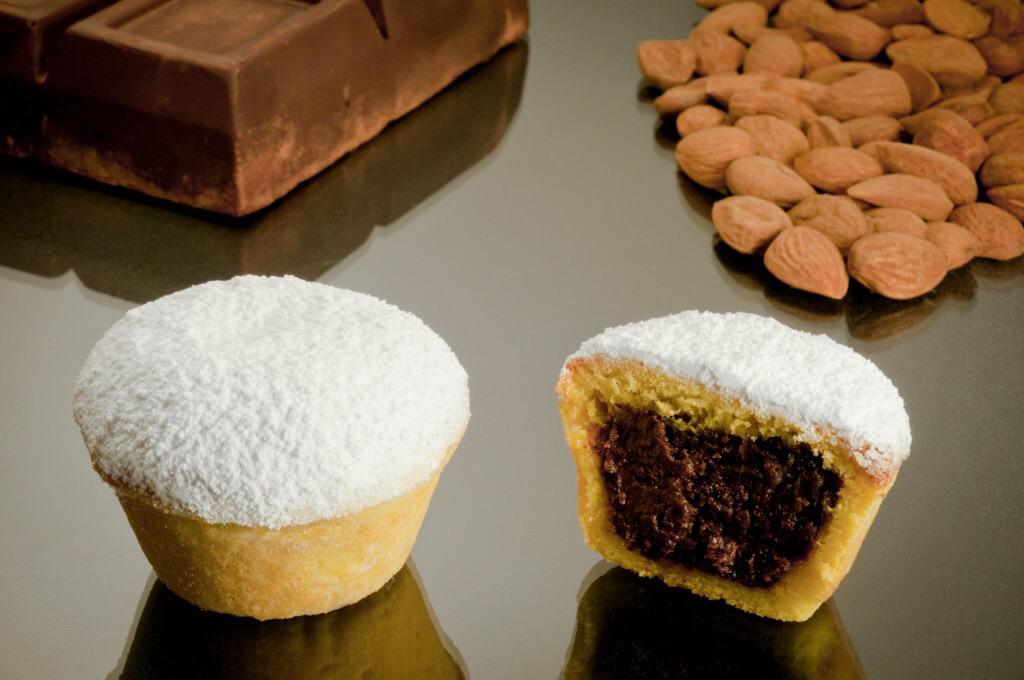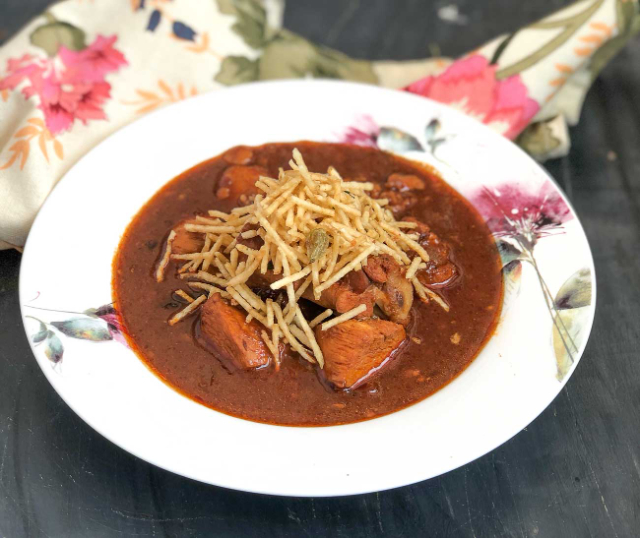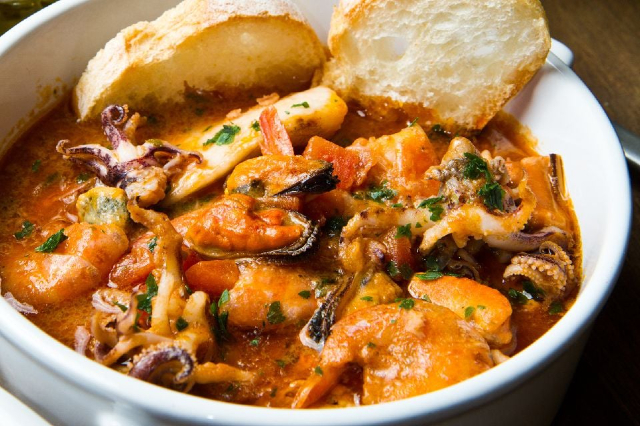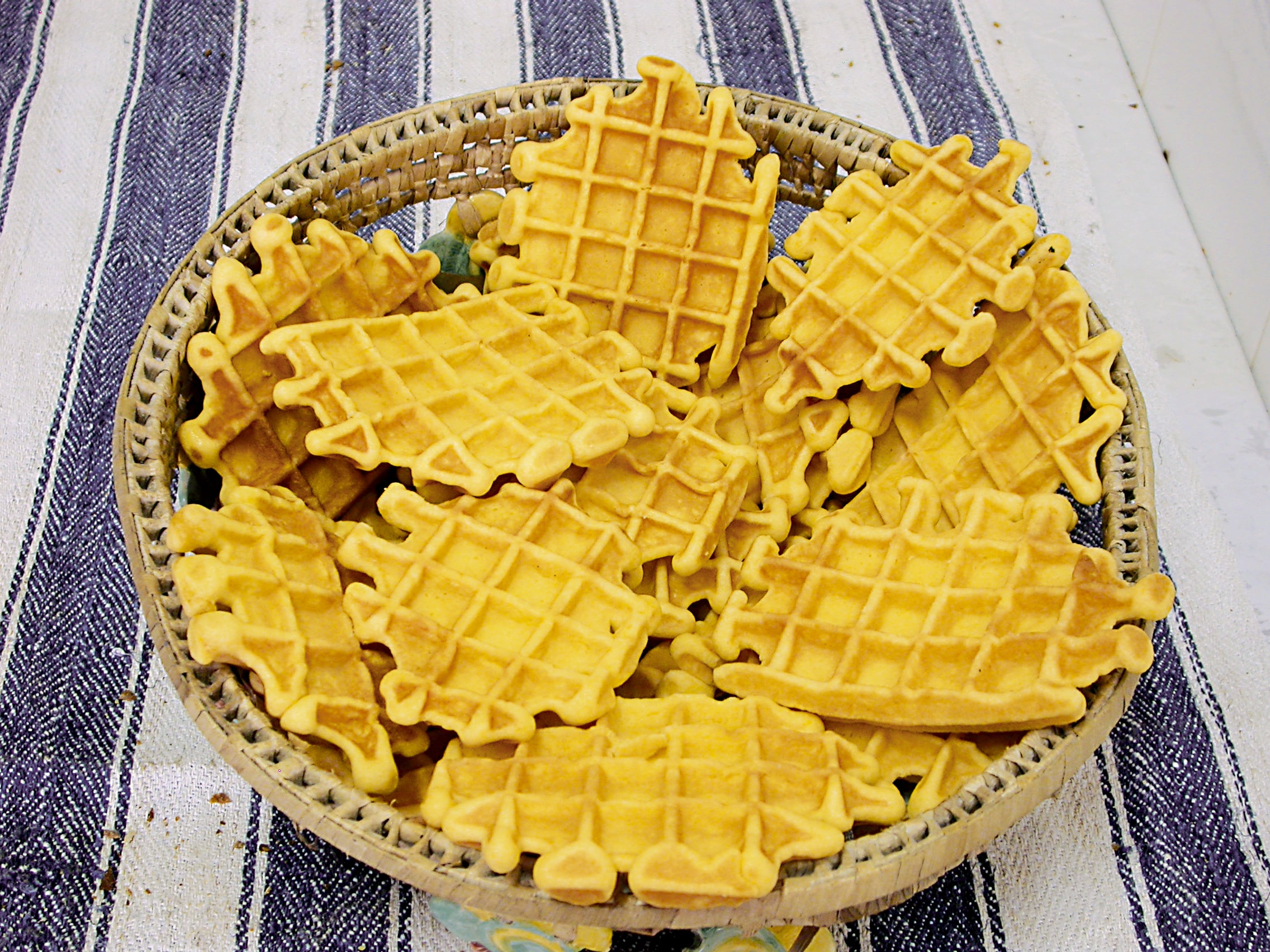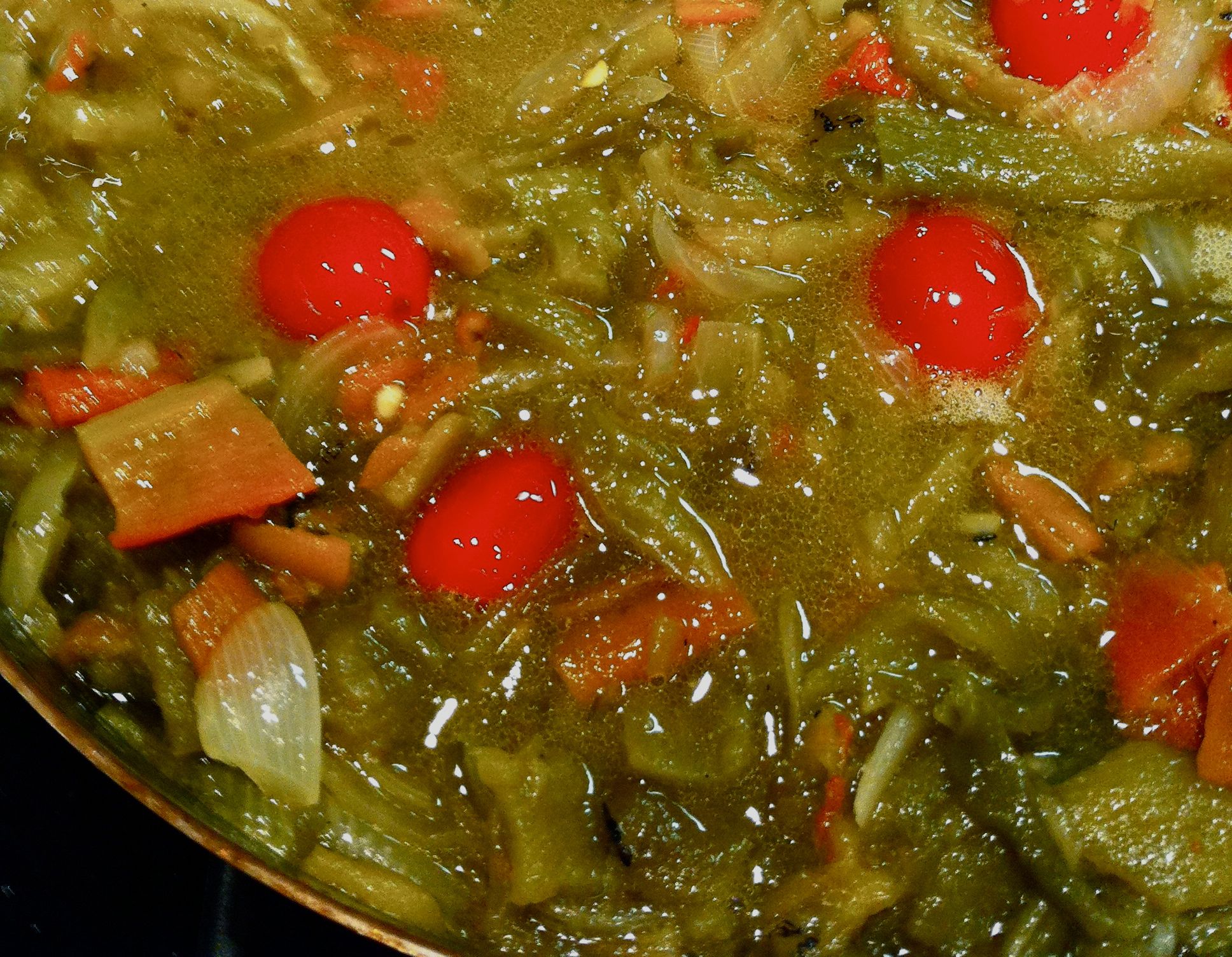The “bocconotto” is a small, short pastry tart, made with extra virgin olive oil, filled with a dense mixture of dark chocolate, almonds and cinnamon.
The Castel Frentano “bocconotto”, also called a “castellino”, is a typical confectionery product of that town and of the Frentano area in general, with countless variations, often linked to closely-guarded recipes handed down through the family.
The short pastry (for about 30 “bocconotti”) is made with 12 tablespoons of superfine flour sieved into a bowl and mixed with ten tablespoons of extra virgin olive oil until large crumbs are formed. The ten egg yolks and ten tablespoons of sugar with grated lemon peel (no pith) are added.
This is mixed again, quickly, to make a smooth paste that is formed into a ball, which is then wrapped in kitchen film and left to rest for at least an hour in a cool place. Separately a filling is prepared in a pan, with 1.5 litres of water, 400g of sugar and 350g of dark chocolate, brought to the boil, stirring occasionally. The filling should cook for about 90 minutes and then 350g of finely-ground, toasted almonds are added, then left to cook for a further 15 minutes.
When the mixture has cooled, eight egg yolks are added, with cinnamon, and the pan is placed back on a moderate heat, continuing to stir for 15 more minutes, until the mixture has finished cooking.
The mixture is left to cool again, stirring occasionally. The short pastry is used to line the aluminium or stainless moulds (originally copper was used), no bigger than 10cm in width and 2-3cm in height, previously buttered, then filling is spooned in.
The remaining short pastry is spread out and a mould is used to cut lids to cover the “bocconotti”, which are then baked at 180°C and cooked until they are a good golden hue. When they are ready they are dusted with icing sugar and served. When cut, the filling is dark and compact with a fragrant chocolate, cinnamon and toasted almond fragrance.
The combination of the delicate short pastry case and the stronger taste of the filling make the “bocconotto
castellino” quite unique and a huge success all over the region and beyond.
The word “bocconotto” was first mentioned in 1930, in Domenico Bielli’s Dizionario abruzzese, with the following entry: “BUCCUNOTTE: a round pastry with a filling of honey, cream, chocolate, whipped cream or other ingredi-
ents”. Scant information handed down to modern times indicates the origins as early 1900s.
Popular tradition, however, as Enzo Giordano points out in “Il Segno”, attributes the cake to the late 1700s-early 1800s, when cocoa first began to circulate in Europe. The “bocconotto” is a huge success outside of the region too,
and is one of the most popular pastries of local home-baking tradition.
